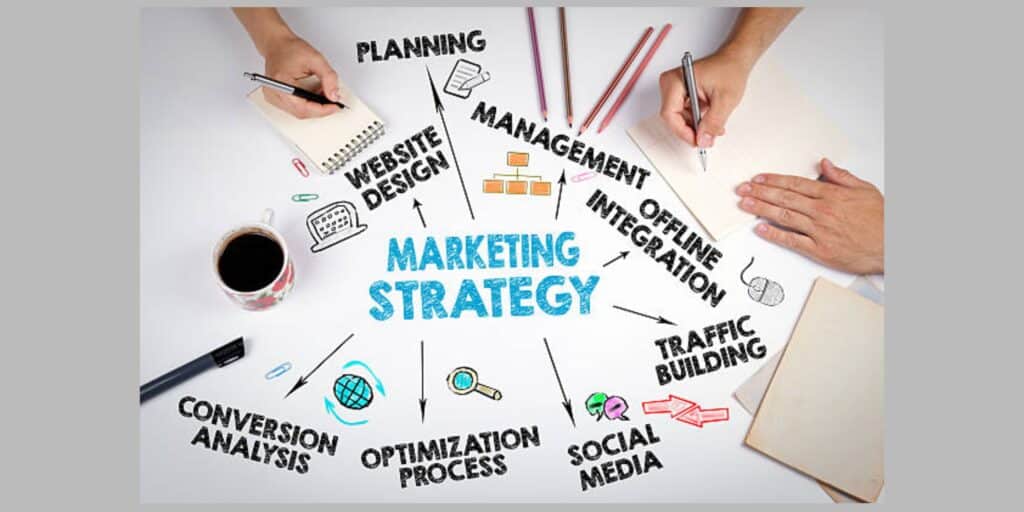Are you ready to win more business and take your company to the next level? Crafting a winning business proposal is the key to securing new contracts and partnerships, but it can be tough to know where to start. Utilizing business proposal examples and templates can significantly enhance the effectiveness of your proposals.
But don’t worry – we’ve got you covered. In this blog, we’ll share the essential steps on how to write winning business proposals that stand out from the crowd, effectively address customer needs, and drive results.
Writing compelling business proposals is crucial for addressing buyers’ pain points and presenting your company as the ideal solution.
Say goodbye to lackluster proposals and hello to new business opportunities. Let’s dive right in!
We will also provide a business proposal example to illustrate key points and help you understand the structure and elements of a successful proposal.
What is a Business Proposal?
Definition and Importance
A business proposal is a written document that outlines a business idea, plan, or project, and is used to persuade potential clients or investors to support a business venture. Think of it as your business’s elevator pitch, but in a detailed and structured format. A well-crafted business proposal showcases your expertise, services, and products, demonstrating how you can meet the specific needs of your clients. It’s not just about selling a product or service; it’s about building trust and establishing a relationship with potential clients. A compelling business proposal can set you apart from the competition and open the door to new business opportunities.
Types of Business Proposals
Business proposals come in various forms, each serving a different purpose. Here are the main types:
Formal Solicited Proposals
These are developed in response to a specific request from a client. They are often detailed and follow a strict format.
Unsolicited Business Proposals
These are created by the proposing party without a direct request from the client. Typically sent to potential clients to seize market opportunities, they can be generic and serve as marketing materials, often used at trade shows. However, they risk being perceived as spammy or unprofessional if not tailored to the client’s needs.
Sales Proposals
These aim to persuade clients to purchase a service or product. They focus on the benefits and value of the offering.
Business Plan Proposals
These outline a company’s strategy and operations, often used to secure funding or partnerships.
Understanding the different types of business proposals helps you tailor your approach to fit the specific context and needs of your audience.
Purpose of a Business Proposal
The primary purpose of a business proposal is to persuade potential clients or investors to support your business venture. It does this by presenting a clear and compelling plan that showcases your business’s expertise and services. A successful business proposal should:
-
Provide a clear and concise overview of the business idea, its goals, and its potential benefits.
-
Include a detailed outline of the proposed solution, covering the methodology, timeline, and budget.
-
Highlight how your business can meet the specific needs of the clients, offering tangible benefits and solutions.
Writing a business proposal as a structured approach to solving a buyer’s problem is crucial, as it allows you to present a clear problem statement and tailored solutions to meet client objectives.
By understanding the definition, importance, types, and purpose of a business proposal, you can create compelling proposals that help you secure new business opportunities and achieve your goals. Whether responding to a formal request or pitching an unsolicited idea, a well-written business proposal is your key to success.
Key Components of a Business Proposal
A business proposal typically includes several key components that help to persuade potential clients or investors to support a business venture. These components may vary depending on the industry, company size, and many other factors. However, some essential elements should be included in every business proposal.
Title Page
The title page is the first impression your business proposal will make, so it needs to be professional and informative. It should include your company’s name, logo, and contact information, ensuring that your potential clients can easily reach you. Additionally, the title page should feature the title of the proposal, the date, and the name of the person or company submitting the proposal. A well-designed title page sets the tone for the entire proposal and reflects your attention to detail and professionalism.
Executive Summary
The executive summary is a crucial part of a business proposal, as it provides a brief overview of the entire proposal. It should be concise, clear, and compelling, and should entice the prospective client to read the rest of the proposal. A good executive summary should include a brief description of the proposed solution, the benefits of the solution, and the expected outcomes. It should also highlight the unique value proposition of the proposal and explain why the prospective client should choose the proposed solution.
Problem Statement
The problem statement is a critical component of a business proposal, as it identifies the problem or need that the proposed solution is intended to address. It should be specific, clear, and concise, and should provide a detailed description of the problem or need. The problem statement should also explain how the problem or need is affecting the prospective client and what the consequences will be if the problem or need is not addressed.
Proposed Solution
The proposed solution is the heart of a business proposal, as it outlines the specific solution that is being proposed to address the problem or need identified in the problem statement. It should be clear, concise, and compelling, and should provide a detailed description of the solution, including how it will be implemented, the benefits of the solution, and the expected outcomes. The proposed solution should also explain how it will address the problem or need identified in the problem statement and what the benefits will be to the prospective client.
Qualifications and Expertise
In this section, you need to highlight why your company is the best choice for the project. Showcase your qualifications and expertise by providing information about your company’s history, mission, and values. Include any relevant certifications, licenses, or awards that demonstrate your credibility and competence. Don’t forget to introduce the team members who will be working on the project, detailing their qualifications, experience, and skills. This not only builds trust but also reassures potential clients that they are in capable hands.
Pricing and Payment Terms
Transparency is key when it comes to pricing and payment terms. This section should provide a clear and concise breakdown of the costs associated with the project, including any fees or charges. Outline the payment schedule, specifying the payment method, frequency, and due dates. By being upfront about the financial aspects, you can avoid misunderstandings and build a foundation of trust with your potential clients.
Terms and Conditions
The terms and conditions section of a business proposal outlines the specific terms and conditions of the proposed solution, including the scope of work, the timeline, the budget, and the payment terms. It should be clear, concise, and comprehensive, and should provide a detailed description of the terms and conditions of the proposed solution. The terms and conditions section should also explain the responsibilities of both parties, including the prospective client and the proposing party, and should outline the procedures for resolving disputes or addressing issues that may arise during the implementation of the proposed solution.
How to Write a Business Proposal Step by Step?
Step 1: Identify Your Target Audience for Maximum Impact.

Before you start writing your business proposal, you must know who you’re writing it for. This is called identifying your target audience. Understanding the needs and problems facing potential clients is crucial for crafting effective proposals.
Before you start writing your business proposal, identify your target audience. Knowing who you’re writing for allows you to tailor your proposal to their needs and pain points, increasing engagement and improving your chances of success. After all, trying to sell a toy to a grown-up just won’t work!
Engaging prospective clients through tailored proposals is essential for building trust and securing their business.
Here are some steps to help you identify your target audience:
-
Think about the problem your business solves: Ask yourself who would be most interested in addressing this issue. Are they small business owners, large corporations, or individual consumers?
-
Make a list of characteristics that describe your ideal customer: Define their industry, role, location, and goals. For example, are they homeowners, property managers, or entrepreneurs looking to scale their operations?
-
Look at your existing customers: Analyze your customer base. Who are your most loyal clients, and what do they have in common? This insight can help you refine your proposal template and ensure it aligns with your audience.
-
Conduct market research: Use surveys, social media analytics, and tools like Google Trends to understand your audience’s preferences, challenges, and goals.
-
By understanding your audience, you can generate business proposal ideas that resonate and stand out in a competitive market.
| Audience | Problem |
| Environmentally conscious people | Lack eco-friendly products in the market |
Step 2: Define the Problem Your Proposal Will Solve

Your business proposal should start by clearly stating the problem your company will solve, which is essential for crafting an effective business proposal. This is called the problem statement, and it’s one of the first things your prospective client should see. A clear problem statement helps your audience quickly understand the challenges you’re addressing and shows that you know their pain points.
Defining the problem sets the stage for your proposed solutions and makes your proposal more engaging. It also builds trust by showing that you’ve done your homework. Keep it simple, focused, and tailored to their needs to ensure your audience stays interested.
Here are some steps to help you define the problem:
-
Think about your target audience’s situation: Consider their pain points, challenges, or unmet needs. Dive into specifics and think about how these issues affect their goals or business operations.
-
Write a clear and specific statement that explains the problem: Avoid being vague or generic. A strong problem statement includes details that resonate with your audience and align with their expectations.
-
Make sure that the problem statement is the first thing the reader sees in your proposal: Placing the problem upfront captures attention and sets the tone for the rest of the proposal. It also helps establish credibility and demonstrates that you’ve done your research.
By defining the problem, you’ll be able to show your audience that you understand their needs and that your business has a solution.
And remember, the more precise you can be about the problem, the more your audience will trust you to have the answer. Precision not only builds trust but also positions your business as a reliable and thoughtful partner in solving their challenges.
| Problem Statement |
| Our community lacks a reliable transportation service for the elderly and disabled, leading to difficulty for them to access essential services. |
Step 3: Research the Competition and Find Your Edge.

Before presenting your solution, it’s essential to understand the current market and what your competition is doing. Conducting market research helps you identify trends, opportunities, and areas where your business can stand out.
By analyzing the competition, you’ll gain insight into what works and what doesn’t. This knowledge allows you to craft a compelling business proposal that directly addresses customer pain points and unmet needs.
Look for gaps in their offerings that your business can fill. Highlighting these areas in your proposal will help showcase your value proposition and position your business as the ideal solution.
Here are some steps to help you research the competition:
- Identify businesses that offer similar products or services.
- Study their websites, social media, and marketing materials to understand their offerings.
- Analyze their strengths and weaknesses to see what they’re doing well and where they fall short.
- Look for gaps in their offerings or areas where your business can provide better solutions.
By researching the competition, you’ll gain valuable insights to help you craft a compelling business proposal. This will allow you to position your business in a way that sets it apart, highlights your value proposition, and appeals to your target audience.
| Problem | Competition | Unique Solution |
| Lack of transportation services for elderly and disabled | Other transportation services are available, but none focus on providing vehicles equipped with wheelchair ramps and trained drivers. | Our business will provide a transportation service specifically designed for the elderly and disabled, with vehicles equipped with wheelchair ramps and trained drivers sensitive to this population’s needs. |
Step 4: Present Your Solution Clearly and Effectively in the Executive Summary.

Now that you’ve defined the problem and researched the competition, it’s time to present your solution. This is where your proposed solutions take center stage, providing a clear and compelling reason why your business is the ideal choice.
A persuasive proposal should explain how your business solves the problem and why your solution is the most effective. Here are some steps to help you present your solution:
-
Be specific: Clearly outline how your solution addresses the audience’s needs, whether it’s reducing costs, improving efficiency, or solving complex challenges.
-
Back up your claims: Use data, statistics, or social proof like client testimonials and case studies to demonstrate your solution’s effectiveness. This builds trust and credibility.
-
Set clear expectations: Highlight the benefits your audience can expect, such as increased revenue, better customer retention, or enhanced productivity. Ensure that the entire proposal is structured in a way that clearly communicates these benefits and keeps the reader engaged.
By presenting a clear and well-supported solution, you’ll instill confidence in your audience and show them that your business can deliver tangible, impactful results.
| Solution | How it works | Why it’s the best |
| Eco-friendly cleaning products | Our products are made from natural and sustainable ingredients, ensuring minimal environmental harm. | Our products are better for the environment and more affordable and effective than traditional cleaning products. |
Step 5: Develop Financial Projections to Attract Investors.

Developing financial projections is essential for convincing investors and funding sources that your business is a solid investment. These projections provide insight into your expected costs and potential returns, helping stakeholders see the financial viability of your business. Clear business proposal outlines that include detailed financial projections can significantly enhance the credibility of your proposal.
By showcasing strong financial planning, you can build confidence and demonstrate your preparedness to manage resources effectively. Accurate projections are key to gaining trust and securing support from investors or funding sources.
Here are some steps to help you develop financial projections:
-
Create an income statement: Provide a detailed breakdown of your revenue and expenses over a specific period, showing your business’s financial viability.
-
Make a cash flow projection: Highlight how your business will manage expenses, maintain operations, and build cash reserves.
-
Include a break-even analysis: Show when your business will start generating profit and what milestones you need to reach.
By presenting solid financial data, you’ll strengthen your proposal and increase your chances of success.
| Projections | Timeline |
| Income statement for the next five years, cash flow projections for the next three years, break-even analysis | Projections will be updated annually to reflect the business’ progress and performance. |
Step 6: Show the Benefits of Your Business Proposal.

Make sure to clearly highlight the benefits of your business in your proposal. Include numbers, statistics, and concrete data to emphasize the value your business brings.
Providing measurable benefits, such as cost savings, productivity gains, or improved customer satisfaction, builds credibility and strengthens your proposal. Make sure to include all the details that demonstrate the tangible benefits your business offers. When your audience can see the tangible results your business delivers, they’ll feel more confident in your ability to meet their needs.
Steps to Show the Benefits:
-
List benefits in detail: Highlight specific advantages, such as cost savings, increased productivity, or improved customer satisfaction. Use relatable examples to make your points stand out.
-
Use social proof: Include testimonials, case studies, or success metrics from satisfied clients to validate your claims and build trust.
-
Highlight your unique selling proposition (USP): Show what sets your business apart, whether it’s innovative solutions, superior service, or a proven track record.
By focusing on benefits and showing how your business adds value, you’ll create a proposal that’s both compelling and persuasive.
| Benefits |
| Increased access to essential services for the elderly and disabled, leading to improved health outcomes and increased independence for this population. |
By showing the benefits of your business, you’ll be able to convince your audience that your business is the best choice for them.
Step 7: Outline Your Marketing Strategy for Success.

Your marketing strategy explains how you’ll reach and attract customers. Including this in your marketing proposal reassures your audience that you have a clear plan for achieving success and driving measurable results. Effective business proposal writing includes a well-thought-out marketing strategy that aligns with your overall business goals.
Steps to Outline Your Marketing Strategy:
-
Identify your target market: Define the specific demographics, preferences, and needs of your prospective customers to show you understand your audience.
-
Describe your unique selling proposition (USP): Highlight what sets your business apart, such as tailored solutions, innovative tools, or exceptional service.
-
Outline your marketing channels: Showcase your plans to use social media marketing, search engine optimization, and other strategies to generate leads and grow your customer base.
A clear and well-detailed marketing strategy demonstrates that your business is prepared to deliver value, attract customers, and achieve success in a competitive market.
| Marketing | Target Market | Unique Selling Proposition |
| Elderly and disabled individuals in the community | Our transportation service provides vehicles equipped with wheelchair ramps and trained drivers who are sensitive to the needs of this population. | We will use social media and local advertising to target our target market and attend community events to raise awareness and generate leads. |
Step 8: Include a Call to Action That Drives Results.

A strong call to action (CTA) motivates your audience to take the next step, whether that’s signing the proposal, scheduling a meeting, or requesting more information. A clear and actionable CTA can make all the difference in driving engagement. Whether you are responding to a formally solicited business proposal or reaching out to potential clients, a strong CTA is essential for encouraging the next steps.
Steps to Include a Strong CTA:
-
End with a clear CTA: For example, “Sign the proposal digitally to get started” or “Contact us today to discuss how we can help.”
-
Make it easy to act: Provide simple options, such as links for signing the proposal electronically or clear contact details for your team. Consider using free business proposal templates to ensure your CTA is well-structured and effective.
-
Remind them of the benefits: Reiterate how your business can improve operations, reduce costs, or drive success.
Including a strong and actionable CTA ensures your audience feels confident and motivated to move forward immediately.
| Call to Action |
| We are currently seeking funding to purchase vehicles and hire drivers. If you are interested in supporting our mission to improve the lives of the elderly and disabled in our community, please get in touch with us to learn more about investment opportunities. |
Step 9: Create a Realistic Timeline for Implementation.

Creating a realistic timeline for implementation is crucial to the success of a business proposal. This section should outline the steps that will be taken to implement the proposed solution, including the timeline for each step. It should also include information about the resources that will be required, including personnel, equipment, and materials.
A realistic timeline should take into account any potential roadblocks or challenges that may arise during the implementation process. It should also include contingency plans for any unexpected delays or setbacks.
Here is an example of what a realistic timeline for implementation might look like:
-
Week 1-2: Conduct market research and analyze data
-
Week 3-4: Develop a marketing strategy and create a plan
-
Week 5-6: Implement the marketing plan and launch the campaign
-
Week 7-8: Monitor and evaluate the results of the campaign
-
Week 9-10: Make any necessary adjustments to the campaign and plan for future growth
By including a realistic timeline for implementation, a business proposal can demonstrate a clear understanding of the project’s scope and requirements. It can also help to build trust with potential clients or investors by showing that the company has a clear plan for implementation. This not only reassures your audience but also showcases your preparedness and commitment to delivering results.
Step 10: Proofread and Revise for a Polished Proposal.
Before sending your proposal, ensure it’s error-free and professionally written. A polished and well-structured proposal document reflects your attention to detail and builds credibility with your audience.
Steps to Proofread and Edit:
-
Check for spelling and grammar errors: Even a single typo can affect how your proposal is perceived, so ensure it’s polished and professional.
-
Ensure clarity: Use clear headings and concise language to make your proposal document easy to read and logically structured. Using business proposal templates can help you maintain a clear and professional structure throughout your document.
-
Validate accuracy: Double-check all figures, data, and relevant details to ensure everything is correct and aligns with your objectives.
By proofreading and revising thoroughly, you’ll create a professional proposal that instills confidence and demonstrates your commitment to excellence.
Business Proposal Design and Templates
Creating a visually appealing and well-structured business proposal is crucial for capturing your audience’s attention and increasing the likelihood of securing a contract. Using real estate digital presentation templates can save time and deliver visually compelling proposals that impress clients instantly.
A comprehensive business proposal template should encompass key sections such as an executive summary, problem statement, proposed solution, terms and conditions, and a compelling conclusion. These sections should be crafted with clear headings and concise language to enhance readability and comprehension.
Incorporating a professional design not only reflects your attention to detail but also enhances the proposal’s impact. Utilize bullet points, visuals, and infographics to break down complex information and keep your audience engaged. By leveraging a well-designed business proposal template, you can effectively communicate your value proposition and stand out in a competitive market.
Ultimately, a polished and organized proposal not only demonstrates professionalism but also builds trust with potential clients, increasing your chances of winning new business. Investing time in crafting a compelling proposal design can be the key to transforming opportunities into successful partnerships.
Final Thoughts on Writing Winning Proposals
Creating a compelling business proposal is essential for turning your ideas into reality. It’s a process that requires careful planning, attention to detail, and a clear understanding of your audience’s needs.
By following the steps outlined in this article, you can craft a proposal that effectively communicates your value proposition and sets your business apart from the competition. A well-written proposal is your first step toward building a successful business, securing support, and gaining the investment needed to bring your vision to life.
Remember, the best proposals are easy to read, persuasive, and tailored to your audience. Focus on clarity, structure, and showcasing the unique benefits your business offers. By following these steps, you can create a great business proposal that effectively communicates your value and sets you apart from the competition.
We hope this article has provided valuable insights and tips to help you create a winning business proposal. If you have any thoughts or feedback, feel free to share them in the comments below.
For more resources on crafting a great proposal, check out our other articles or start your journey with a free trial to explore powerful tools that can elevate your business proposals.








